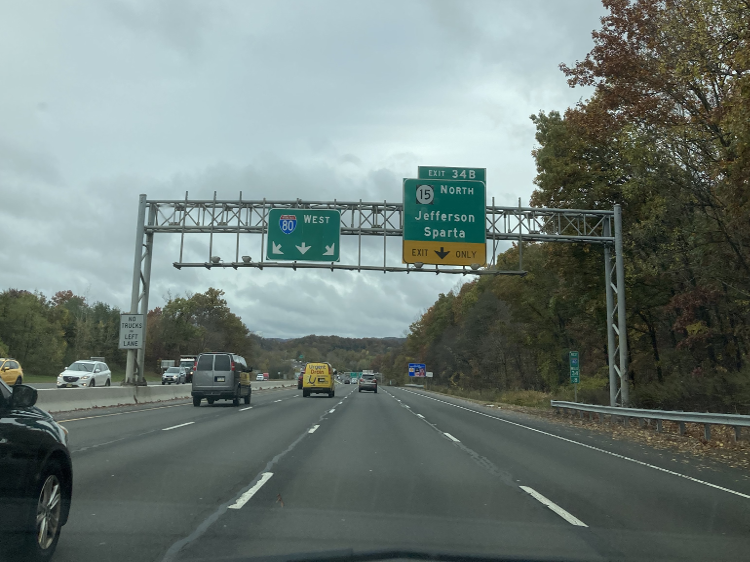I-80/Route 15 Interchange
Project Description
NJDOT identified three transportation issues with the I-80/Route 15 Interchange, which included missing movements, operational and physical condition issues associated with Route 15 southbound, and congestion throughout the interchange. While there are eight possible movements at the interchange, there are only five direct ramps, thereby leaving three movements to and from points west that require a circuitous use of indirect ramps, local roads, U-turn and intersections with and without traffic signals. The absence of direct ramps servicing these movements burdens local roads with additional traffic, increasing congestion during peak commuting hours. The project therefore proposed to provide two of the three missing movements via new ramps: 1) Route 15 northbound to I-80 westbound (Ramp G), and 2) Route 15 southbound (Ramp B) over the proposed Ramp G. Other project improvements included extending and widening an existing ramp acceleration lane, widening I-80 westbound over North Main Street, raising the elevation of the ramp from I-80 westbound to Route 15 southbound to meet the new elevation of the Route 15 southbound ramp (Ramp B), and lane configuration modifications on Route 15 southbound.
PCA performed a quantitative traffic noise assessment detailed within a Noise Assessment document and summarized within the NEPA Categorical Exclusion Document (CED) prepared for the project. The traffic noise assessment was performed pursuant to 23 CFR 772 and in accordance with NJDOT’s Traffic Noise Policy. Existing noise measurements with concurrent vehicle classification counts were conducted to validate the project-specific TNM2.5 model. Noise barrier mitigation was investigated in four areas of impact, however, none met all NJDOT noise wall requirements and were not recommended for consideration under Final Design.
PCA also performed a construction noise analysis related to explosive blasting necessary along I-80 rock slopes to accommodate the I-80 eastbound to Route 15 southbound exit ramp and the Route 15 northbound to I-80 westbound entrance ramp. The analysis was performed using SoundPLAN ™ noise modeling software with ground elevation contours within rock removal areas to accurately define terrain. Discrete receiver points were modeled at noise-sensitive sites near the blast area, as well as a receiver grid to generate construction-related noise contours.
Since the project was included within the STIP and located within a CO maintenance area, no CO analysis was required. Further, the project was located within a PM2.5 non-attainment/maintenance area and PM10 attainment area; therefore, no PM2.5 analyses were required. Air quality was qualitatively addressed within the NEPA CED.
